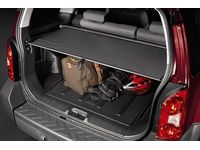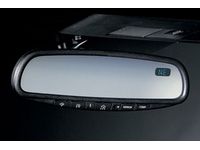- Hello
- Login or Register
- Quick Links
- Live Chat
- Track Order
- Parts Availability
- RMA
- Help Center
- Contact Us
- Shop for
- Nissan Parts
- Nissan Accessories

Why choose NissanPartsDeal
- Quality Parts
To keep your car running at peak performance, you need Nissan Xterra genuine parts from NissanPartsDeal.com. For years, we've been the leading online Nissan Xterra parts store. At NissanPartsDeal.com all the parts in our catalog are inspected and tested by our team of experts to ensure optimal fit and performance.
- Unbeatable Prices
What makes NissanPartsDeal.com the best choice for Nissan Xterra OEM parts? You get giant savings because our goal is to offer unbeatable prices. OEM parts are perfect for drivers who want the best products available but don't have the funds to splurge on expensive parts. Plus, Our products offer the same performance and reliability as their OEM counterparts at a fraction of their price.
- Fast Shipping
All the OEM Nissan Xterra parts you need for routine maintenance and repair can be found in our complete Nissan Xterra parts catalog. Having the best inventory available, your parts for Nissan Xterra will arrive fast anywhere in the nation. Plus, all Nissan Xterra auto parts purchases are risk-free as everything is expedited directly from dedicated authorized dealers and backed by the manufacturer's warranty, so you'll be back on the open road before you know it.
Popular Genuine Nissan Xterra Parts
- Body Electrical Parts View More >
- Engine Mechanical Parts View More >
- Axle & Suspension Parts View More >
- Engine Electrical Parts View More >
- Miscellaneous Parts View More >
- Body (Side & Rear) Parts View More >
- Body (Front, Roof & Floor) Parts View More >
- Fuel & Engine Control Parts View More >
- Power Train Parts View More >
- Exhaust & Cooling Parts View More >
- Steering Parts View More >
- Brake Parts View More >
Shop Genuine Nissan Xterra Parts with NissanPartsDeal.com
The Nissan Xterra is a compact five-door SUV with options for front-wheel, two-wheel, or four-wheel drive. Launched in North America in 2000, it was the first Nissan vehicle entirely designed, engineered, and manufactured in the United States. Available in two trims, XE and SE, in the initial years, the Xterra was positioned as an affordable, durable, and high-quality vehicle. Its design was primarily developed by Nissan Design America in California, while the improvements in 2002 were executed in Michigan. The model featured a revamped front end, a redesigned instrument cluster, a larger storage compartment, and a 3.3L VG33E V6 engine. The 2009 redesign included more color options, leather seats for SE models, and roof lights for SUV models. Despite its discontinuation in the United States in 2015 due to fuel efficiency concerns, declining sales, and stricter safety regulations, the Xterra enjoyed global popularity, with production in countries like Brazil, Iran, and China. Its rugged construction, potent V6 engines, high ground clearance, and optional 4x4 system emphasize its off-road prowess while maintaining on-road comfort and practicality, making the Xterra a classic SUV.
The Nissan Xterra, a popular compact and mid-size SUV, often encounters issues with suspension failure, particularly when traveling over harsh terrains. Drivers report issues like the vehicle bouncing and bottoming out, making squealing noises, and intense vibrations. There are also reports of sluggish response in handling, and the vehicle swerving or nosediving when braking, which can be addressed by replacing the Xterra sway bar bushing, leaf spring bushing, leaf spring, shock absorber, control arm bushing, or wheel bearing. Other common issues reported by Xterra owners include problems with the braking system, like a faulty parking brake cable indicated by an activated Parking Brake Light; transmission issues necessitating inspection of the valve body and drive shaft; and engine performance issues including slow acceleration response or starting problems, often due to problems with the throttle cable, oxygen sensor, intake manifold gasket, or oil filter. Regular and routine maintenance, especially of the seat belt, wiper arm, wiper blade, and cabin air filter, is essential to ensure safety and comfortable driving conditions.
Opting for OEM items can result in long-term savings on upkeep and repairs, as they provide the utmost durability due to their stringent manufacturing procedures. At NissanPartsDeal.com, we offer the most competitive prices for OEM Nissan Xterra parts, such as Seat & Seat Belt, Body (Back Door & Rear Body). Our extensive inventory of genuine Nissan Xterra parts ensures that you find exactly what you need. For your peace of mind, all our parts come with a manufacturer's warranty and are eligible for our hassle-free return policy, coupled with our promise of the fastest delivery service.
Nissan Xterra Parts Questions & Answers
- Q: How do you remove and reinstall an alternator in a Nissan Xterra for maintenance or replacement?A: Disconnect the battery cable, and raise and support the vehicle. Remove the lower and side splash shields, and disconnect the electrical connector and an output wire. Remove the screw and ground wire, loosen the adjustment bolt, and remove the drivebelt. Remove the mounting bolts and separate the alternator. Install the drivebelt, reconnect the battery cable, and adjust the drivebelt. Install alternator mounting bolts, install the alternator, and adjust the drivebelt.
- Q: How to remove and reinstall a distributor in a Nissan Xterra?A: Disconnect the battery cable and remove the distributor cap cover. Note the position of the raised "1" and disconnect the electrical connectors. Rotate the engine, mark the distributor base and cylinder head, remove the hold-down bolt, and insert the distributor. Turn the rotor slightly, install the cap and screws, plug in the connectors, and reattach the spark plug wires. Connect the battery cable, check and adjust the timing, and reinstall the cap cover.
- Q: How to inspect battery cables on Nissan Xterra?A: Periodically inspect battery cables for damage, cracked insulation, corrosion and loose wire strands. When replacing, disconnect negative cable first and hook up last. Clean threads of starter solenoid or ground connection with wire brush, apply petroleum jelly. Make sure replacement cable is same length and diameter, reaches battery post without stretching. Clean battery posts, apply petroleum jelly. Connect positive cable first, then negative.






























































